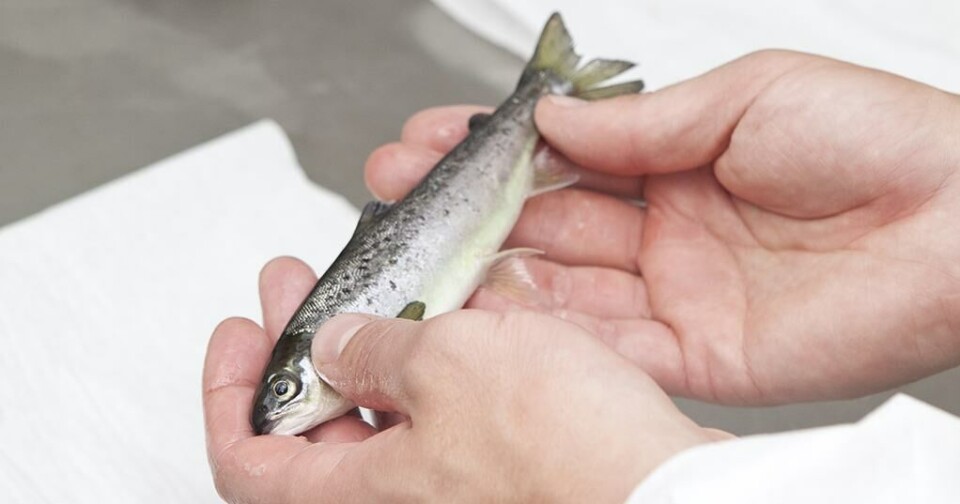
BioMar told to compensate STIM for copying SuperSmolt feed
A Norwegian court has ordered feed producer BioMar to pay millions of kroner in compensation to STIM (formerly Europharma) for patent infringement and breach of good business practice.
In the case, Oslo District Court ruled that two patents held by STIM for its SuperSmolt feed and method, which improve the consistency of smoltification of fish under constant light, were supported.
In all, the judgement will present Biomar for a bill in excess of NOK 22 million.

‘A well-worked judgement’
“We are obviously very pleased to have won on all the key points in the case. It is a well-worked judgement, which explicitly establishes the value of innovation in both the original SuperSmolt patent and the FeedOnly patent,” said STIM chief executive Jim-Roger Nordly.
Biomar asked the court to find both patents invalid, but this was rejected.
“This [SuperSmolt] was an invention that was clearly needed, and it was in an area where, for a long time, there had been a focus on finding the solution without it happening,” stated the court judgement.
Patent infringement
BioMar had committed a patent infringement by copying SuperSmolt FeedOnly and selling the copy feed under the name Intro Tuning, ruled the court. For this, Biomar was ordered to pay a compensation of NOK 10 million to STIM.
Biomar's business process around the patent infringement was elucidated in the part of the lawsuit that dealt with infringement of Norway’s Marketing Act, where the charges included both misleading marketing and breach of good business practice. Here, the court ordered that BioMar should pay a further NOK 6.5m in compensation.
“Only after the product was a success and STIM had built interest in the market, did BioMar obtain a sample of STIM’s feed, in a way that the company have not been willing to explain the details of in court,” stated the judgement.
“It has, however, come to light that this sample was analysed by BioMar in order to produce an analogous product, allegedly at the request of customers. Through the examination of evidence, the courts find that this course of action is clearly not accepted in the industry and appears clearly blameworthy.”
‘False information’
The judgement continued: “In the marketing of the product, too, BioMar has leeched off the market development and goodwill that STIM has built up for its product and method. (…) Furthermore, Biomar has consciously provided STIM with false information regarding whether or not the company had an analogous feed on the market.”
It further added: “The court finds it clear that BioMar’s conduct involves an unreasonable exploitation of STIM’s efforts and results which is contrary to good code of conduct between businesses.”
An important element of the judgement is that the district court determines how the use of smoltification feed, or so-called salt feed, can also result in infringement of the original SuperSmolt patent. This is a method patent, which is to say that the feed company does not break it by producing the feed, but if the farmer uses it in violation of the patent requirements, the farmer is guilty of patent infringement. In the district court, STIM tried to place this responsibility on BioMar by means of so-called indirect infringement. BioMar would not accept that responsibility and the court concluded that responsibility in such cases lay with the farmer.
The process surrounding STIM’s SuperSmolt patents is not complete. The European Patent Authority is considering applications that will extend the FeedOnly patent further. Since the applications are published in Norway, they will have retroactive effect upon approval.
“The judgment is important for an industry where the need for innovation is enormous,” said Nordly.
“We are a relatively small company, but still spend tens of millions of dollars each year on research and development. The district court’s assessments provide motivation for anyone who is committed to developing new products and methods that can bring the industry further. It is a clear signal that it is not okay to fool others, or straight forward copy the other developer.”
Sensing receptors
The precursor to today’s SuperSmolt FeedOnly was originally developed as a result of new discoveries around so-called calcium sensing receptors in humans. American scientists understood how by stimulating the same receptors in fish, smoltification could be achieved. STIM bought the rights to the original SuperSmolt patent in 2008 and further developed the technology for SuperSmolt FeedOnly, which was launched in 2014.
STIM said the technology had largely solved one of the biggest challenges facing the aquaculture industry, namely mortality and poor post-release growth due to inadequate smoltification by means of light control.
Full light
SuperSmolt FeedOnly allows the smolt to be produced under full light and without any danger that parts of the group will desmoltify before release. The ability to synchronise smoltification, so that all fish have accumulated good seawater tolerance prior to release, has been of great importance for fish welfare, survival and growth.
“SuperSmolt is a true game-changer. It has undoubtedly been instrumental in significantly reducing mortality post-transfer, and the economic benefits for fish farmers are also significant. They now transfer fish groups that perform from day one at sea and reach harvest size faster,” said Nordly.
SuperSmolt is currently being used in all major salmon producing countries.






















































